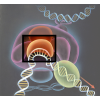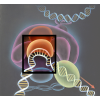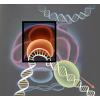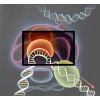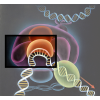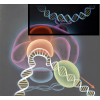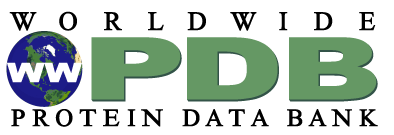7. Myc-Max-DNA

Geis paints Myc-Max at the bottom of the painting in a faint blue outline. Myc-Max does not interact directly with TBP, but is a factor in transcriptional activation.
Used with permission from the Howard Hughes Medical Institute (www.hhmi.org). All rights reserved.
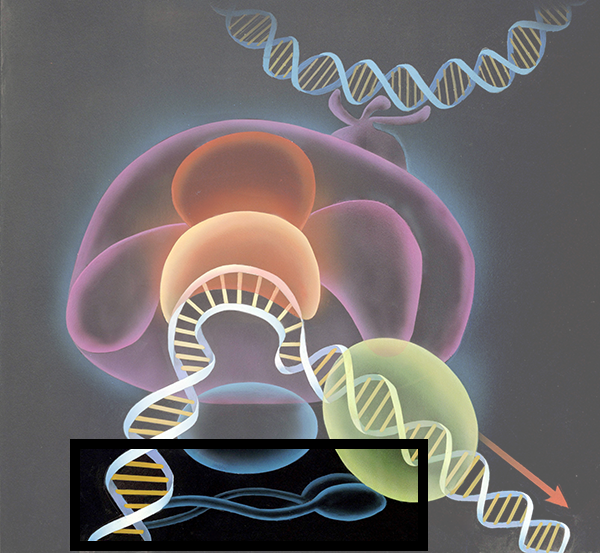

Related PDB Entry: 1NKP
Experimental Structure Citation
Nair, S. K. & Burley, S. K. (2003). X-ray structures of Myc-Max and Mad-Max recognizing DNA: Molecular bases of regulation by proto-oncogenic transcription factors. Cell, 112, 193-205.
About Myc-Max-DNA
Myc-Max is a transcription factor complex that binds to DNA and functions in transcriptional activation. The Myc protein must first form a heterodimer with Max protein that can then bind to DNA. The Myc protein has a critical role in controlling cell growth.


